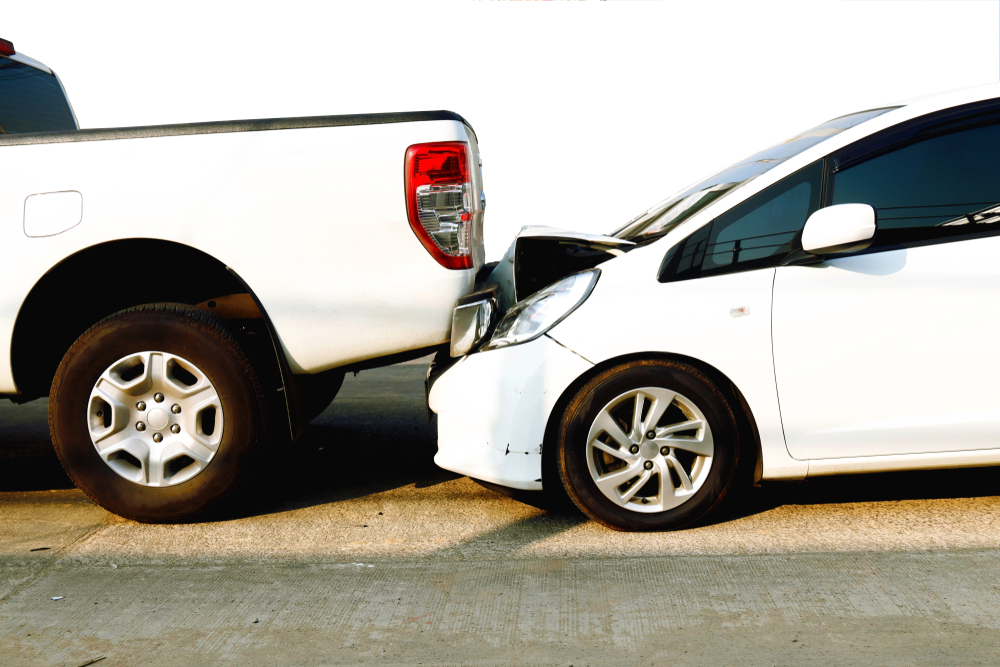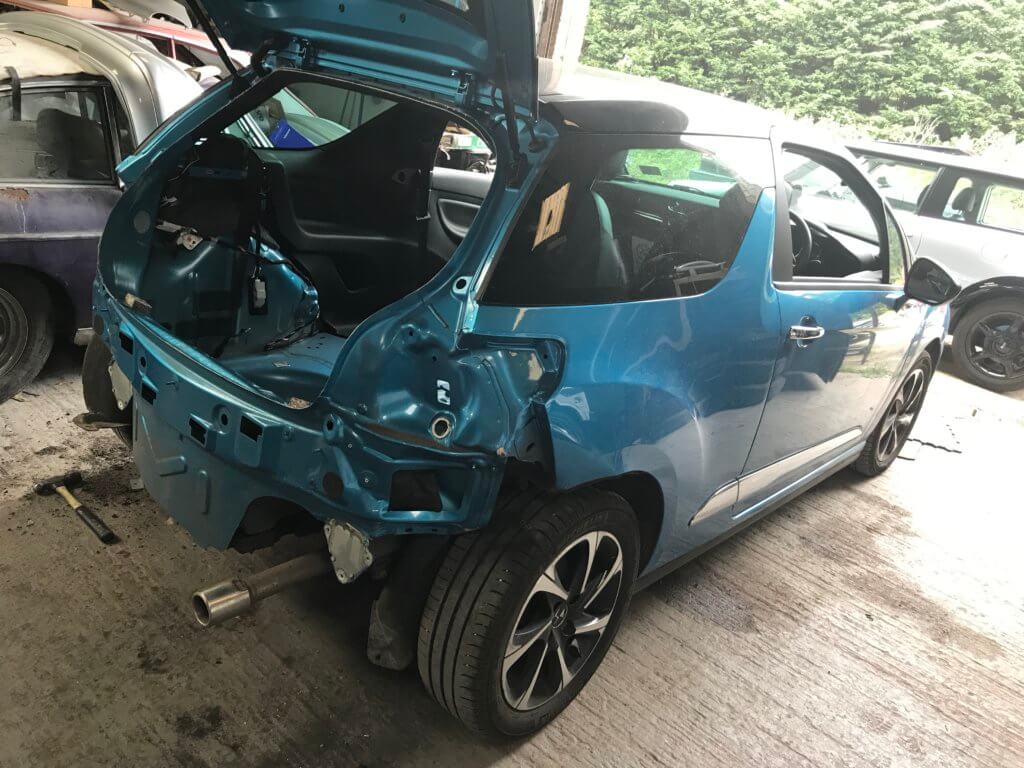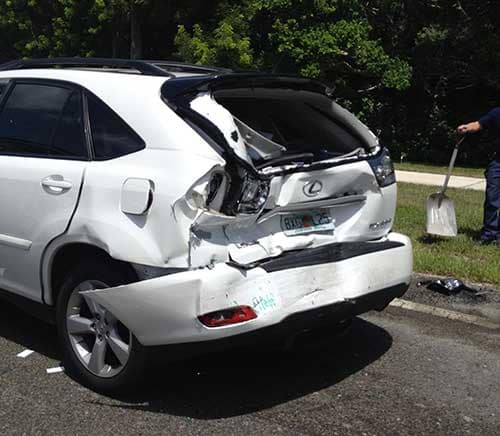rear end collision fault uk
What is a rear end shunt. Accidents involving a rear-end collision are among the most basic in terms of evaluating culpability.

What Happens To Your Body In A Rear End Collision
Rule 126 of the Highway Code states.

. Serious property damage can happen in rear-end collisions. The safe rule is never to get closer than the overall stopping distance. Common causes of rear-end collisions include.
Either when the front vehicle is stopped such as at a junction or a set of traffic lights or is travelling at low speeds such as in slow moving traffic. A rear-end shunt is when one vehicle collides into the back of a vehicle in front. Whether its a phone other passengers or anything else driving while distracted is a leading cause of auto accidents.
It can often be difficult to determine who is at fault in a rear-end collision. Leave enough space between you and the vehicle in front so that you can pull up safely if it suddenly stops. However rear-end accidents are almost exclusively the fault of the person driving the car in the rear with some exceptions.
The rear driver is not always at fault. The driver in front accelerated in reverse. There are multiple vehicles involved and another car pushed their vehicle forward.
This could include law enforcement offices others involved in the crash witnesses and insurance companies. A rear-end collision can cause damage to your overall quality of life giving you injuries and forcing you to miss work. Leave enough space between you and the vehicle in front so that you can pull up safely if it suddenly stops.
Each case will turn on its own facts and circumstances but the point to be learned here is simply that there is no steadfast rule which means that a rear-end collision will automatically give rise to negligence on the part of the following driver. This might be when the car in front is stationary for example at a junction roundabout or traffic lights or when congested traffic is moving slowly. Rear-end collisions can occur when the following driver is not paying enough attention or if the leading driver does not have working brake lights.
According to the National Highway Traffic Safety Administration NHTSA there were 2132000 rear-end collisions in the United States in 2017. This can cause major neck pain. A rear end shunt describes a type of collision between two or more vehicles in a road traffic accident in which one vehicle collides with the rear of another.
The lead driver may be found liable for damages if they are not using reasonable care while driving. The most common injury sustained is whiplash. If the evidence shows that you share some of the fault for the auto accident you are not barred from recovering compensation.
That said the lead driver may be found at fault for a rear-end collision. The duration of a settlement is often based on determining the person at fault for the incident and proving personal damage whether thats physical or emotional through trustworthy evidence. If another driver causes their vehicle to collide with the rear of yours there is fault on their part.
A rear-end collision occurs when a vehicle from behind strikes another one that is traveling in the same lane. So long as the other party or parties are 50 or more at fault. Fault for a car accident can be shared.
Some states support a presumptive law that generally places fault on the rear driver either for following too closely or due to distracted driving. When it comes to rear-end motor vehicle collisions there is a strong assumption that the rear vehicle is 100 at fault regardless of whether the driver of the first vehicle drove in a way that may have contributed to the accident. One or both tail lights arent working on the vehicle in front.
This can damage the spinal cord and cause problems such as nerve damage or paralysis. The lead driver in a rear-end collision may be held partly responsible for an accident but not fully. Rear-end collisions are usually caused by a rear driver that follows too close under the road conditions or by leaving too little room for stopping safely.
The rear driver is generally at fault in a rear-end collision. Please call our claims line on 0800 634 7575 if you have experienced an injury caused from a traffic accident of this type no matter if you have been hit from behind or have hit someone else from behind as a result of reckless use of brakes. January 10 2022.
Reach out to Berger and Green at 412 661-1400for a free consultation and see how our car accident lawyerscould help. Sometimes the front driver carries the liability for damages in a rear-end crash. This might be the case if the front driver was driving under the influence backs into the rear.
Spinal injury A spinal injury could happen due to the body jolting backwards and injuring the back. While there is still an investigation into what caused this type of accident many people involved may assume the driver in the back was responsible. Common injuries from rear-end collisions include whiplash and back injuries.
A rear shunt accident can cause life-changing injuries for both drivers and passengers. As with all road traffic accident claims a rear end collision claim could take anywhere between six and twelve months to settle. Some of these injuries could be.
Most people believe the rear driver is always at fault in a rear-end accident. Rule 126 of the Highway Code states. The situation can be even more complicated when the other party disputes the fault.
A vehicle may be totaled or need costly repairs due to the impact. When determining who is at fault in a rear-end collision the answer is most often the rear or approaching vehicle. The safe rule is never to get closer than the overall stopping distance.
These collisions usually occur when distractions prevent drivers from. Personal injuries sustained in a rear-end crash can also be serious. Friday 25th June 2021 If another driver causes their vehicle to collide with the rear of yours there is fault on their part.
A vehicle is stopped in the road. Frustrating as it is to get stuck behind a slow driver expressing that frustration by tailgating is extremely dangerous. In California victims of rear-end accidents have to determine the at-fault driver before filing an auto insurance claim.
A rear end driver may not be to blame or may only be partially to blame in any of the following situations. An award of 47000 was made to Mr ODonnell in damages. The neck moves back and forth too fast like the cracking of a whip.

Rear End Collision Who Is Always Liable The Dashner Law Firm

Knowing Your Rights In A Rear End Collision Personal Injury Lawyers

Rear End Collision Results In Major Repairs Non Fault Car Accidents

Car Crash Rear End Collision Hd Claims

Rear End Collision Whiplash Claim Worn Tyres Invalidate Motor Insurance

Who Is At Fault If You Are Rear Ended Legal Expert Get Free Advice

Why Negligent Drivers Cause Rear End Collisions In Arizona Griffen Stevens

Who Is At Fault For A Rear End Car Collision In Maryland

Rear End Collision Why You Might Not Be At Fault Mcw Legal

Rear End Collisions Are The Most Frequent Type Of Collision Abels Annes P C

How Rear End Accidents Affect The Body Massachusetts Legal Blog

Rear End Shunt Show Fault For Rear End Car Collisions Neck Whiplash

Rear End Collision Fault Car Accident Lawyer Seattle Wa Attorneys

I Was Rear Ended And Then Pushed Into The Car In Front Of Me Am I At Fault For This Car Accident Lem Garcia Law

I Was Rear Ended Should I Get A Lawyer Lerner And Rowe

Rear Ended Another Vehicle Now What Trottier Insurance

Who Is At Fault In A Rear End Collision Car Accident Lawyers Ben Crump

Rear End Collision Stock Photos Royalty Free Rear End Collision Images Depositphotos

Rear End Shunt Show Fault For Rear End Car Collisions Neck Whiplash